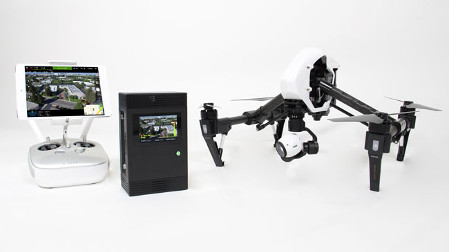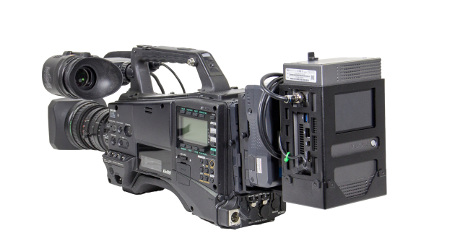Broadcasters Embrace Drones for Live News Coverage
Originally conceived as strategic military tools, unmanned aerial vehicles (UAVs) have become useful for scientific data collection and agricultural applications, as well as a recreational hobby. More recently, news agencies have begun to embrace UAVs, more commonly known as drones, for aerial newsgathering. In early October, drone footage became an integral part of the coverage by many media outlets to show the destruction caused by Hurricane Matthew.
For example, in the United States, the Federal Aviation Administration no doubt helped the potential use of drones by broadcasters in August, when it enacted new rules that loosened regulations for drones that weigh less than 55 pounds (approximately 24 kilograms). There are still regulations—visual line-of-sight between the drone and its pilot is required, plus the drone may fly no higher than 400 feet (approximately 121 meters) above ground level and can fly only during local daylight hours. However, the new rules are far less burdensome, and some restrictions (such as flying at night or over people) can even be waived by the FAA. Plus, there is no need for an advanced flight plan or pilot’s license for operators.

TVU Networks and DJI partnered to release the world’s first Aerial Newsgathering Pack, giving news organizations and professional video production crews the ability to transmit live full HD video to any broadcast facility or CDN. The solution combines DJI’s Inspire 1 drone with TVU’s TVU One IP video transmitter to deliver a fully-integrated live transmission solution capable of delivering live video from practically any location.
While there are plenty of restrictions, drones offer broadcasters an enticing option for live coverage of sports, weather events, natural disasters, and hazardous areas of interest. Drones literally deliver a new angle on the Big Story. Yes, there are equipment and training costs, but a drone has a significantly smaller price tag than a news helicopter. That’s not to say drones will necessarily suddenly replace news industry’s helicopters, but drones do offer aerial coverage options for stations that cannot afford a chopper.
Of course, for any drone to be an effective option for aerial ENG, it needs to be able to transmit footage back to the broadcaster in real time. Some recreational drones record HD footage to an on-board media card while transmitting a low-res version of the footage to a mobile device for live monitoring. That’s fine for a hobbyist, but broadcasters need a system that provides live and reliable HD transmission.
Generally, there are two approaches toward producing drone-based live video transmissions. The first features on-board hardware systems that are integrated into the drone itself, creating an all-in-one solution. An on-board solution can be more expensive because of the customized hardware, and it locks the station into using that particular drone.

The TVU One portable IP video transmitter mounted on a camera body. TVU One features proprietary video transmission technology called Inverse StatMux Plus (IS+). With IS+, unsurpassed HD picture quality is dependably delivered at sub-second latency over cellular 3G/4G/LTE modems even when transmitting in a moving vehicle traveling at over 60mph/100kph.
Get the TV Tech Newsletter
The professional video industry's #1 source for news, trends and product and tech information. Sign up below.
The second approach connects external hardware to the drone remote control. While not as neat and tidy as the integrated approach, some solutions require as little as one HDMI connection to enable transmission. The use of external hardware provides the same video transmission capabilities, but users are not locked in to a particular drone. Plus, once the transmission is complete, the external hardware can be used for other assignments using other video cameras.
In 2015, video transmission companies began announcing aerial ENG solutions tailored for the drone market, often in cooperation with drone manufacturers. TVU Networks and DJI, for example, announced the Aerial Newsgathering Pack, which combines the TVU One portable IP video transmitter with the Inspire 1 drone to deliver full HD video from a drone to any broadcast facility with less than one second of latency.
Broadcasters have a choice of methods for drone footage transmission, including cellular, Wi-Fi, Ethernet, microwave, or satellite. Video-over-IP technology has become a popular choice for early adopters, because it allows broadcasters to transmit live HD video with minimal latency and easily insert drones into existing workflows. With readily available technology and the loosening of FAA restrictions, many industry experts believe drones will quickly become an essential part of the newsgathering process, not just a technological novelty.
Eric Chang is the vice president of marketing for TVU Networks.
